Your cart is currently empty!
Tag: Data Center Troubleshooting
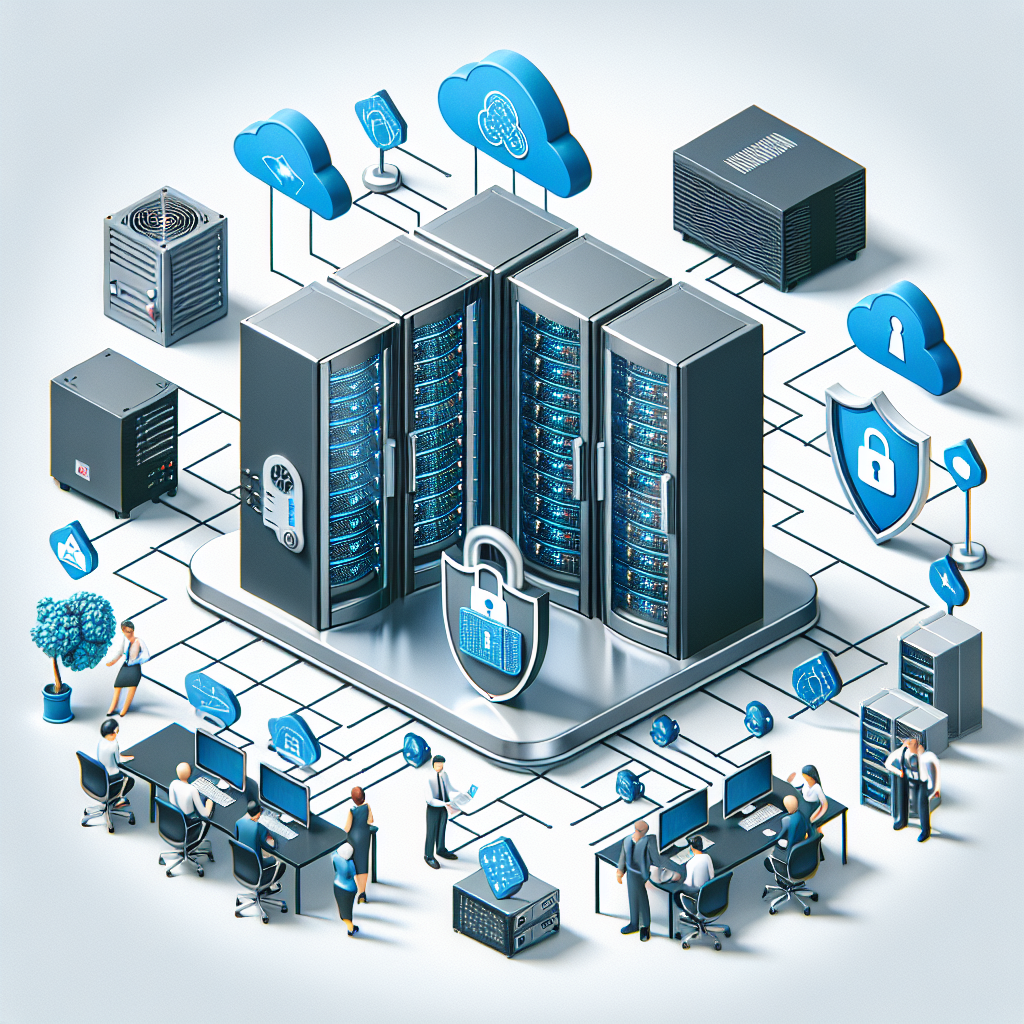
Key Strategies for Maintaining Data Center Business Continuity
A data center is the backbone of any organization’s IT infrastructure, housing critical hardware, software, and data that keeps the business running smoothly. In today’s fast-paced digital world, ensuring business continuity in a data center is essential to prevent costly downtime and maintain the trust of customers and stakeholders. Here are some key strategies for maintaining data center business continuity:1. Implement a comprehensive disaster recovery plan: A disaster recovery plan outlines the steps to take in the event of a data center outage or disaster, including how to restore critical systems and data. This plan should be regularly updated and tested to ensure it is effective in a real-world scenario.
2. Invest in redundant systems and backups: Redundancy is key to ensuring data center business continuity. This includes redundant power supplies, network connections, and storage systems to minimize the risk of hardware failures. Regular backups of critical data should also be taken and stored off-site to protect against data loss.
3. Monitor and maintain infrastructure: Regular monitoring of hardware and software systems in the data center can help identify potential issues before they escalate into major problems. Proactive maintenance of equipment, such as regular firmware updates and cleaning, can also help prevent unexpected failures.
4. Train and educate staff: A well-trained and knowledgeable team is crucial for maintaining data center business continuity. Staff should be familiar with the disaster recovery plan, know how to respond to emergencies, and have the skills to troubleshoot and resolve issues quickly.
5. Conduct regular audits and assessments: Regular audits and assessments of the data center infrastructure can help identify vulnerabilities and areas for improvement. This can include physical security assessments, vulnerability scans, and performance testing to ensure the data center is operating at peak efficiency.
6. Plan for scalability and growth: As the organization grows, so too will the demands on the data center. Planning for scalability and growth is essential to ensure that the data center can accommodate increased workloads and traffic without sacrificing performance or reliability.
7. Maintain strict security measures: Data center security is paramount for maintaining business continuity. This includes physical security measures such as access control and surveillance, as well as cybersecurity measures like firewalls, encryption, and intrusion detection systems to protect against cyber threats.
By implementing these key strategies for maintaining data center business continuity, organizations can ensure that their critical systems and data are protected, and that they can continue to operate smoothly even in the face of unexpected challenges. Investing in the right infrastructure, training, and planning can help mitigate risks and keep the data center running smoothly for years to come.

Navigating the Challenges of Data Center Disaster Recovery
In today’s digital age, data centers play a crucial role in ensuring the smooth operation of businesses and organizations. These facilities house large amounts of critical data and information that are vital for the day-to-day functions of a company. However, with the increasing frequency of natural disasters and cyber-attacks, the need for robust disaster recovery plans for data centers has become more important than ever.Navigating the challenges of data center disaster recovery can be a daunting task, but with careful planning and preparation, organizations can mitigate the risks associated with potential disruptions. Here are some key challenges that businesses may face when it comes to data center disaster recovery, and how to overcome them:
1. Identifying potential risks: The first step in navigating the challenges of data center disaster recovery is to identify the potential risks that could impact the facility. This includes natural disasters such as earthquakes, hurricanes, and floods, as well as cyber-attacks, power outages, and equipment failures. By conducting a thorough risk assessment, organizations can better understand the vulnerabilities of their data center and develop a comprehensive disaster recovery plan to address these risks.
2. Developing a robust disaster recovery plan: Once the risks have been identified, it is crucial to develop a robust disaster recovery plan that outlines the steps to be taken in the event of a data center disruption. This plan should include detailed procedures for data backup and recovery, as well as contingency plans for alternative power sources and communication channels. Regular testing and updating of the plan are also essential to ensure its effectiveness in the event of a disaster.
3. Securing backup and recovery solutions: Data backup and recovery solutions are critical components of a data center disaster recovery plan. Organizations should invest in secure and reliable backup solutions that can quickly restore critical data and information in the event of a disruption. Cloud-based backup solutions offer scalability and flexibility, allowing businesses to store their data off-site and access it remotely in the event of a disaster.
4. Ensuring data center resilience: Data center resilience is essential for navigating the challenges of disaster recovery. This includes implementing redundant systems and infrastructure to ensure continuous operation of the facility in the event of a disruption. Redundant power sources, cooling systems, and network connections can help minimize downtime and ensure that critical data and applications remain accessible during a disaster.
5. Training and preparedness: Finally, training and preparedness are key components of navigating the challenges of data center disaster recovery. Regular training exercises and drills can help staff members understand their roles and responsibilities in the event of a disaster, and ensure that they are prepared to respond quickly and effectively. Communication protocols should also be established to keep stakeholders informed and updated during a data center disruption.
In conclusion, navigating the challenges of data center disaster recovery requires careful planning, preparation, and investment in secure backup and recovery solutions. By identifying potential risks, developing a robust disaster recovery plan, securing backup solutions, ensuring data center resilience, and training staff for preparedness, organizations can mitigate the risks associated with data center disruptions and ensure the continuity of their business operations.
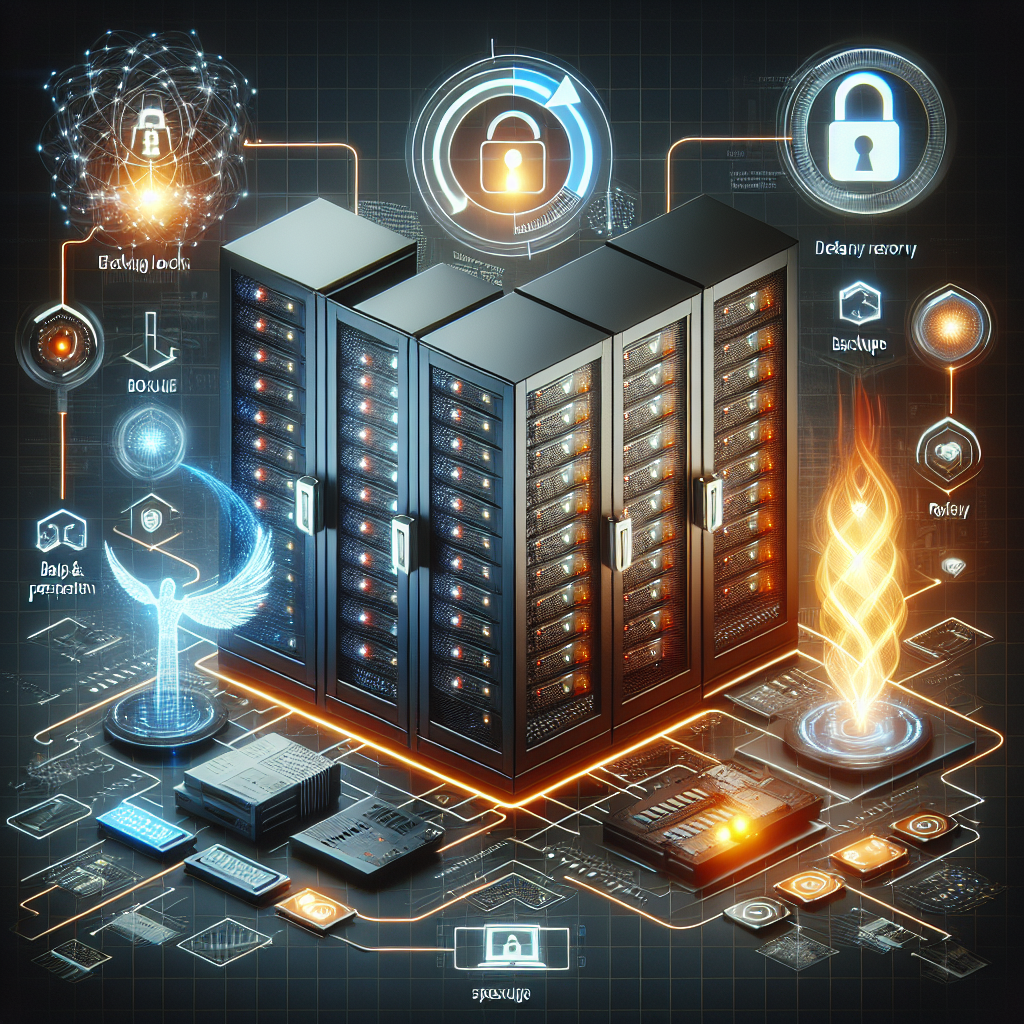
Ensuring Data Security in Data Center Backup and Recovery Processes
Data security is a critical component of any organization’s data center backup and recovery processes. With the increasing amount of data being generated and stored by businesses, it is more important than ever to ensure that this data is protected from unauthorized access, theft, or loss.One of the first steps in ensuring data security in data center backup and recovery processes is to implement strong access controls. This includes limiting access to sensitive data to only authorized individuals and implementing multi-factor authentication to prevent unauthorized access. By controlling who has access to the data, organizations can reduce the risk of data breaches and ensure that only those who need access can retrieve the data.
Another important aspect of data security in data center backup and recovery processes is encryption. Encrypting data both in transit and at rest can help protect it from unauthorized access. This means that even if data is intercepted while being transferred between servers or stored on backup tapes, it will be unreadable without the encryption key. Organizations should also regularly update and rotate encryption keys to further enhance data security.
In addition to access controls and encryption, organizations should also regularly test their backup and recovery processes to ensure that they are working effectively. This includes testing backups to ensure that data can be restored quickly and accurately in the event of a disaster. Regular testing can help identify any weaknesses in the backup and recovery processes and allow organizations to address them before they become a problem.
Furthermore, organizations should also consider implementing data loss prevention measures to prevent sensitive data from being accidentally or maliciously deleted or altered. This can include implementing policies and procedures to restrict the deletion or modification of certain data, as well as using data loss prevention tools to monitor and control data access and movement.
Overall, ensuring data security in data center backup and recovery processes is essential for protecting sensitive data and ensuring business continuity. By implementing strong access controls, encryption, regular testing, and data loss prevention measures, organizations can minimize the risk of data breaches and ensure that their data is protected. Investing in data security measures now can help organizations avoid costly data breaches and disruptions in the future.

Optimizing Data Center Database Performance: Best Practices and Strategies
In today’s digital age, data centers play a crucial role in storing and managing vast amounts of information for businesses of all sizes. As the heart of any organization’s IT infrastructure, data centers house databases that store critical data such as customer information, financial records, and operational data. Ensuring optimal performance of these databases is essential to maintaining business continuity and meeting the demands of a fast-paced digital world.Optimizing data center database performance requires a combination of best practices and strategies that address various aspects of database management, hardware, software, and network infrastructure. Here are some key tips to help businesses improve the performance of their data center databases:
1. Regularly monitor and analyze database performance: Monitoring database performance is crucial for identifying bottlenecks, inefficiencies, and potential issues that may impact performance. Use monitoring tools to track key performance metrics such as CPU usage, memory usage, disk I/O, and query execution times. Analyze the data collected to identify trends and patterns that can help optimize database performance.
2. Optimize database design and schema: A well-designed database schema can significantly impact performance. Normalize databases to reduce redundancy and improve data integrity. Use indexing to speed up data retrieval and query processing. Avoid using complex joins and queries that can slow down performance. Regularly review and optimize database design to ensure optimal performance.
3. Implement efficient storage and I/O strategies: Storage and I/O performance are critical factors in database performance. Use high-performance storage solutions such as solid-state drives (SSDs) or storage area networks (SANs) to improve data access speeds. Implement RAID configurations to increase data redundancy and improve read/write performance. Optimize disk I/O by distributing data across multiple disks and partitions.
4. Tune database queries and optimize SQL code: Poorly optimized SQL queries can significantly impact database performance. Use query optimization techniques such as indexing, query caching, and query tuning to improve query performance. Avoid using wildcard characters in queries, as they can slow down query processing. Regularly review and optimize SQL code to ensure efficient database performance.
5. Implement a comprehensive backup and recovery strategy: Data loss can have severe consequences for businesses. Implement a robust backup and recovery strategy to protect critical data and ensure business continuity. Regularly back up databases to multiple locations, including offsite storage. Test backup and recovery procedures to verify data integrity and reliability.
6. Scale database infrastructure as needed: As businesses grow, their database infrastructure needs to scale accordingly. Implement scalable database solutions that can accommodate growing data volumes and user demands. Consider using cloud-based database services or distributed database systems to scale database infrastructure as needed. Monitor performance metrics to identify when it’s time to scale up or out.
Optimizing data center database performance requires a proactive approach that addresses various aspects of database management, hardware, software, and network infrastructure. By implementing best practices and strategies such as monitoring database performance, optimizing database design and schema, implementing efficient storage and I/O strategies, tuning database queries, implementing a comprehensive backup and recovery strategy, and scaling database infrastructure as needed, businesses can ensure optimal performance of their data center databases and meet the demands of a fast-paced digital world.
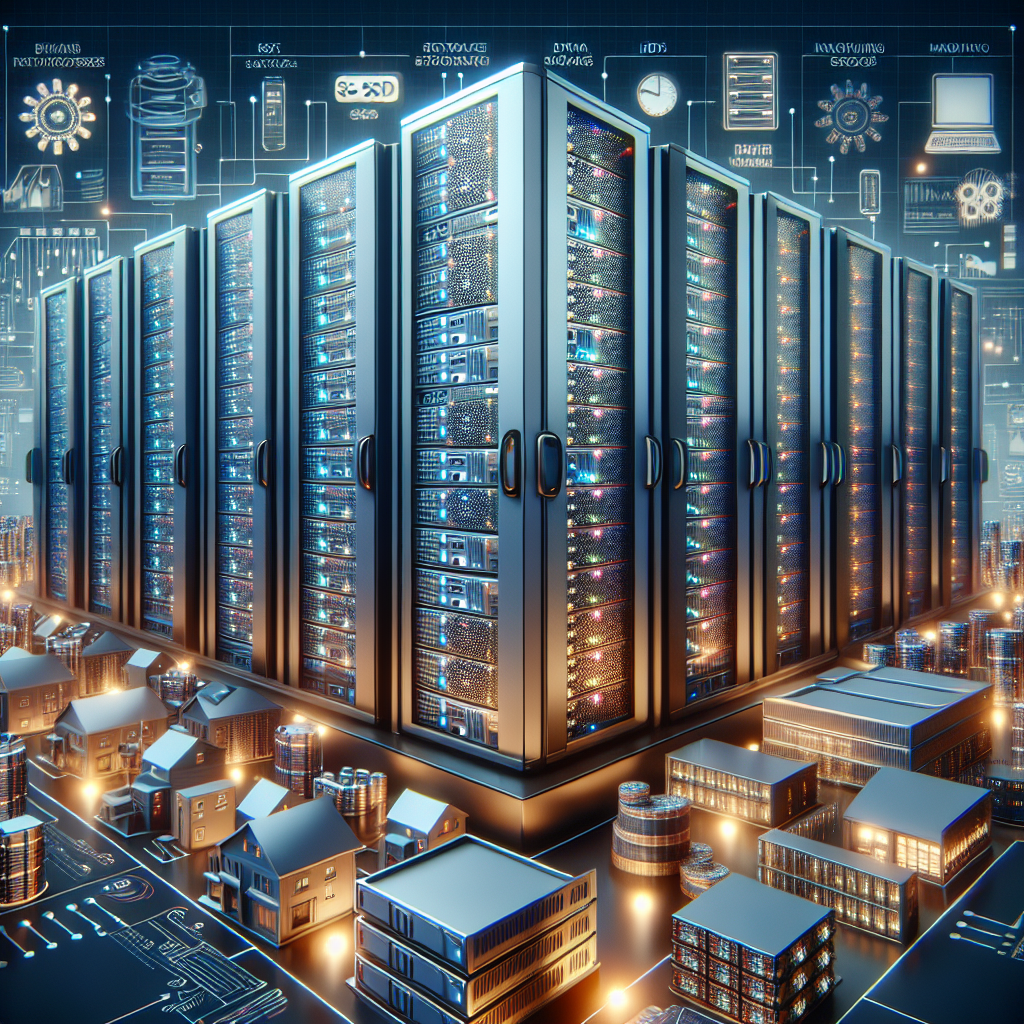
Data Center Storage Solutions for Small and Medium Businesses
Data centers are the nerve center of any business, storing and managing vast amounts of data critical to the organization’s operations. For small and medium businesses (SMBs), finding the right data center storage solutions can be a challenge. With limited budgets and resources, SMBs need cost-effective and efficient storage solutions to meet their growing data storage needs.There are several data center storage solutions available for SMBs to choose from, each offering unique features and benefits. Here are some of the most popular options:
1. Network Attached Storage (NAS): NAS is a storage device that connects to a network and provides file-based data storage services to multiple users. NAS is easy to set up and manage, making it an ideal solution for SMBs with limited IT resources. NAS systems are scalable, allowing businesses to add more storage as their data needs grow.
2. Storage Area Network (SAN): SAN is a high-speed network that connects storage devices to servers, providing block-level storage access to applications. SANs are highly scalable and offer high-performance storage capabilities, making them ideal for SMBs with demanding data storage requirements. However, SANs can be complex and expensive to implement and manage.
3. Cloud Storage: Cloud storage services allow businesses to store their data in the cloud, eliminating the need for on-premises storage hardware. Cloud storage is cost-effective and scalable, making it a popular choice for SMBs. However, businesses must consider data security and compliance when using cloud storage solutions.
4. Hybrid Storage: Hybrid storage solutions combine on-premises storage with cloud storage, offering the benefits of both worlds. Hybrid storage allows businesses to store frequently accessed data on-premises for fast access and archive less frequently accessed data in the cloud for cost savings. Hybrid storage is a flexible and cost-effective solution for SMBs with diverse data storage needs.
When selecting a data center storage solution for their business, SMBs should consider factors such as data storage requirements, scalability, performance, cost, and data security. It is essential to choose a solution that can meet both current and future data storage needs while staying within budget constraints.
In conclusion, data center storage solutions play a crucial role in the success of small and medium businesses. By choosing the right storage solution that aligns with their business needs and goals, SMBs can ensure their data is secure, accessible, and scalable as their business grows. Whether opting for NAS, SAN, cloud storage, or hybrid storage, SMBs must carefully evaluate their options to find the best storage solution for their business.

Optimizing Data Center Server Management for Improved Productivity
In today’s fast-paced digital world, data centers play a crucial role in storing and managing the vast amounts of information generated by organizations. As the demand for data storage continues to grow, it is essential for businesses to optimize their server management in order to improve productivity and efficiency.One of the key factors in optimizing data center server management is ensuring that servers are properly configured and maintained. This includes regularly updating software, monitoring performance metrics, and implementing security measures to protect against potential cyber threats. By keeping servers up to date and secure, businesses can prevent downtime and ensure that their data is always accessible when needed.
Another important aspect of optimizing server management is effectively managing server resources. This includes allocating resources based on demand, monitoring resource usage, and optimizing server performance to ensure that applications run smoothly. By efficiently managing resources, businesses can maximize server efficiency and minimize wasted resources, leading to improved productivity and cost savings.
Furthermore, businesses can improve server management by implementing automation tools and processes. Automation can help streamline server provisioning, configuration, and maintenance tasks, saving time and reducing the risk of human error. By automating routine tasks, IT teams can focus on more strategic initiatives and improve overall productivity.
In addition, businesses can benefit from implementing virtualization technology to optimize server management. Virtualization allows organizations to consolidate servers, reduce hardware costs, and improve resource utilization. By virtualizing servers, businesses can increase flexibility, scalability, and efficiency, leading to improved productivity and performance.
Overall, optimizing data center server management is essential for businesses looking to improve productivity and efficiency. By properly configuring and maintaining servers, effectively managing resources, implementing automation tools, and leveraging virtualization technology, organizations can streamline operations, reduce costs, and maximize server performance. By investing in optimizing server management, businesses can gain a competitive edge in today’s data-driven world.

The Role of Virtualization in Data Center Network Infrastructure
In today’s digital age, data centers play a crucial role in storing, processing, and managing vast amounts of information for businesses and organizations. As the demand for faster and more efficient data processing continues to grow, virtualization has emerged as a key technology in optimizing data center network infrastructure.Virtualization in data centers involves creating virtual instances of servers, storage devices, and networking resources, allowing multiple virtual machines to run on a single physical server. This technology helps organizations achieve greater flexibility, scalability, and cost-efficiency in their data center operations.
One of the primary benefits of virtualization in data center network infrastructure is the ability to consolidate hardware resources. By running multiple virtual machines on a single physical server, organizations can reduce the number of physical servers needed, leading to lower hardware costs and reduced energy consumption. This consolidation also simplifies data center management and maintenance, as administrators can more easily monitor and control virtual machines from a centralized interface.
Virtualization also enables organizations to quickly scale their data center infrastructure to meet changing business needs. With virtual machines, businesses can easily add or remove resources as required, without the need to purchase and install new physical hardware. This flexibility allows organizations to respond to fluctuations in demand more effectively, ensuring that their data center infrastructure can support growing workloads without incurring unnecessary costs.
In addition to flexibility and cost savings, virtualization also enhances the security and reliability of data center network infrastructure. By isolating virtual machines from one another, organizations can prevent potential security breaches or performance issues from affecting other virtual machines on the same physical server. Virtualization also enables organizations to create backups and snapshots of virtual machines, ensuring data integrity and availability in the event of hardware failures or disasters.
Overall, virtualization plays a critical role in optimizing data center network infrastructure by improving flexibility, scalability, cost-efficiency, security, and reliability. As organizations continue to expand their digital footprint and rely more heavily on data center resources, virtualization will remain a key technology in ensuring efficient and effective data center operations.
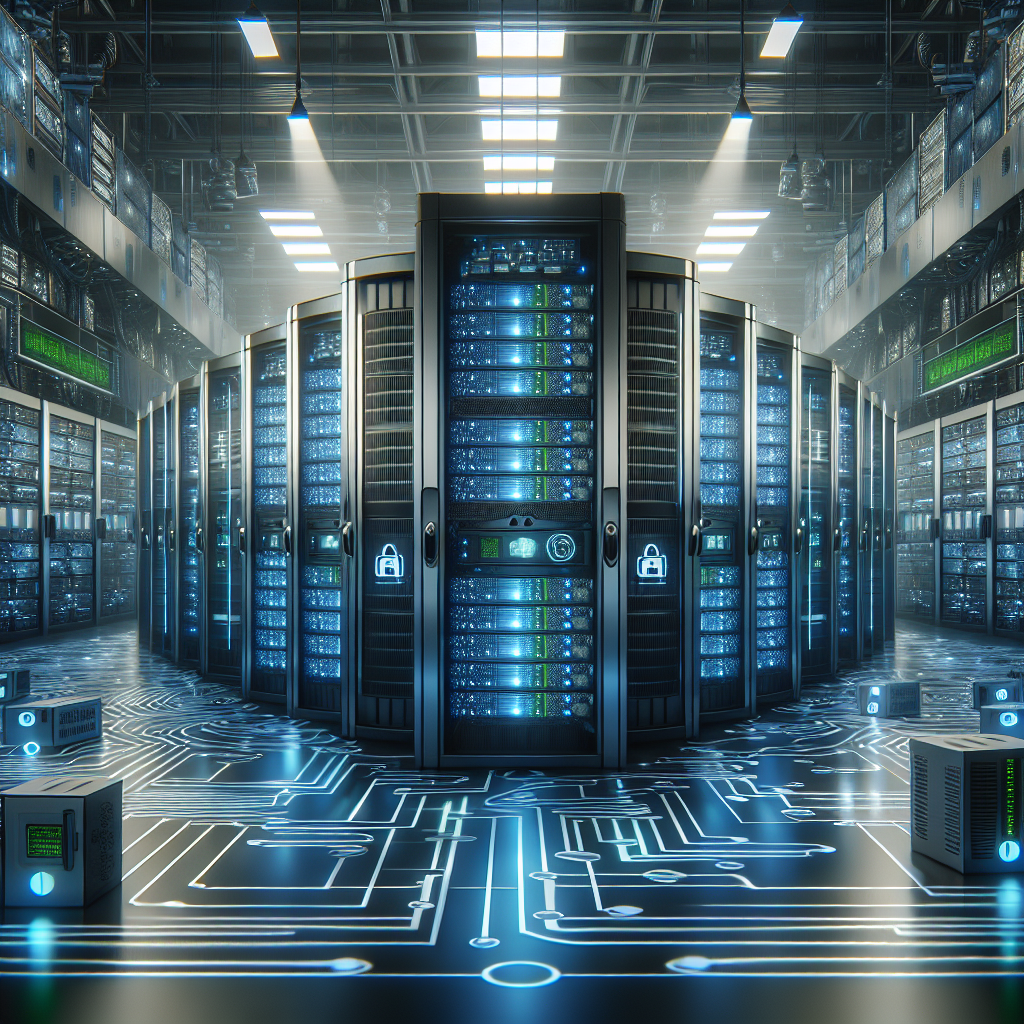
Ensuring Data Center Resilience: The Role of Robust Security Systems
In today’s digital age, data centers play a crucial role in storing and processing vast amounts of information for businesses and organizations. With the increasing reliance on data-driven decision making, ensuring the resilience of data centers has become a top priority for IT professionals.One of the key components of data center resilience is robust security systems. In a world where cyber threats are constantly evolving and becoming more sophisticated, having a strong security infrastructure in place is essential to protect sensitive data and ensure the continuity of business operations.
There are several ways in which robust security systems can help enhance the resilience of data centers. One of the most important aspects is perimeter security, which involves implementing physical barriers, access controls, and surveillance systems to prevent unauthorized access to the data center facility. This can include biometric authentication, security guards, and surveillance cameras to monitor and control who has access to the data center.
In addition to physical security measures, data centers also need to implement robust cybersecurity protocols to protect against cyber threats such as malware, ransomware, and phishing attacks. This can include firewalls, intrusion detection systems, and encryption technologies to safeguard data both in transit and at rest. Regular security assessments and penetration testing can help identify vulnerabilities and weaknesses in the security infrastructure, allowing IT professionals to take proactive measures to address them before they are exploited by malicious actors.
Furthermore, data centers should also have redundant power and cooling systems in place to ensure continuous operation in the event of a power outage or equipment failure. Redundant systems can help prevent downtime and data loss, allowing businesses to maintain productivity and continuity even in the face of unforeseen disruptions.
Overall, ensuring data center resilience requires a holistic approach that encompasses physical security, cybersecurity, and redundancy measures. By implementing robust security systems, data center operators can protect critical infrastructure and data, mitigate risks, and ensure the continuity of business operations in the face of evolving cyber threats and unforeseen disruptions. Ultimately, investing in robust security systems is essential for safeguarding data center resilience and ensuring the reliability and availability of critical business information.
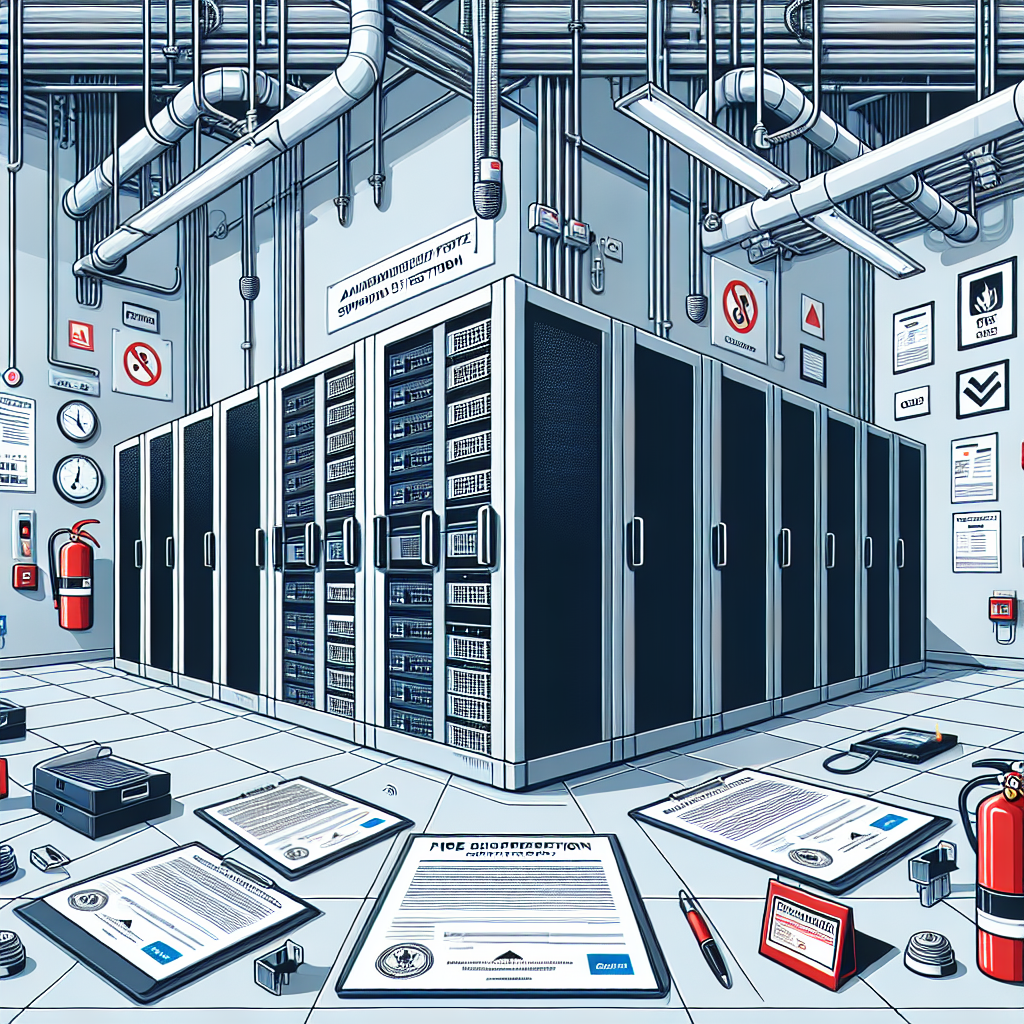
Fire Suppression System Regulations for Data Centers: Compliance and Safety Standards
As technology continues to advance and data becomes increasingly vital to businesses, the importance of protecting data centers from potential disasters, such as fires, has never been more critical. Fire suppression systems are a key component in safeguarding these facilities, but with evolving technology and regulations, ensuring compliance and safety standards is essential.Regulations for fire suppression systems in data centers are primarily governed by the National Fire Protection Association (NFPA) standards, specifically NFPA 75: Standard for the Protection of Information Technology Equipment. This standard provides guidelines for the installation, testing, and maintenance of fire suppression systems in data centers to protect valuable equipment and data.
One of the key requirements outlined in NFPA 75 is the use of automatic fire suppression systems, such as clean agent suppression systems or water mist systems, which are designed to quickly detect and suppress fires without causing damage to sensitive equipment. These systems must be installed in accordance with manufacturer specifications and regularly inspected and maintained to ensure they are in proper working condition.
In addition to the type of fire suppression system used, NFPA 75 also specifies the design and placement of detectors and alarms to provide early warning of a fire. This includes smoke detectors, heat detectors, and flame detectors strategically placed throughout the data center to quickly detect any signs of a fire and alert occupants.
Furthermore, NFPA 75 requires data centers to have an emergency response plan in place in the event of a fire, outlining evacuation procedures, emergency contacts, and protocols for shutting down IT equipment to prevent data loss. Regular fire drills and training for employees on how to respond to a fire are also recommended to ensure everyone is prepared in the event of an emergency.
Compliance with NFPA 75 and other relevant regulations is not only necessary to protect data centers from fires but also to ensure the safety of employees and visitors. Failure to comply with these regulations can result in fines, legal action, and, most importantly, the loss of valuable data and equipment.
In conclusion, fire suppression system regulations for data centers are essential to protect against potential disasters and ensure the safety of occupants. By following NFPA standards and implementing a comprehensive fire suppression plan, data center operators can mitigate the risk of fires and safeguard their facilities. Compliance with these regulations is not only a legal requirement but also a critical step in protecting valuable data and equipment from potential harm.
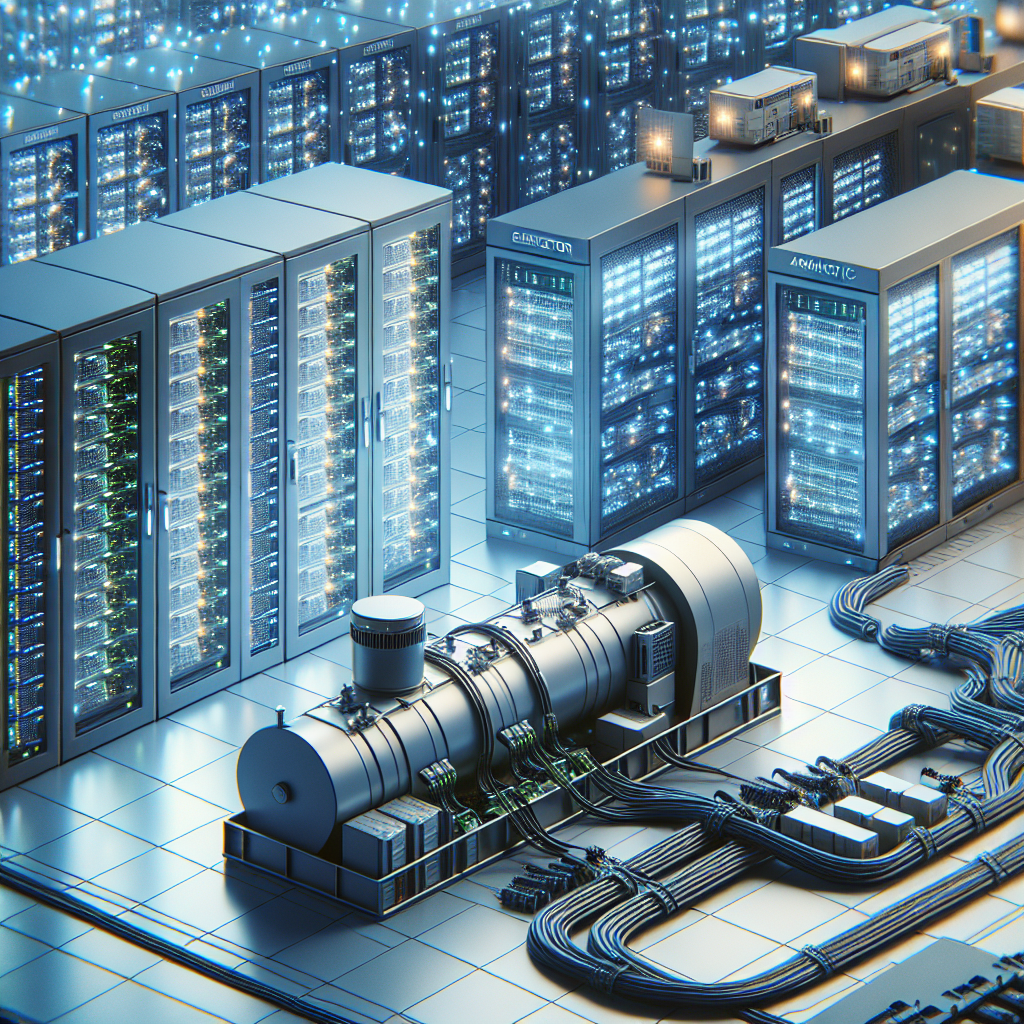
How Data Center Generators Ensure Business Continuity
In today’s fast-paced digital world, businesses rely heavily on data centers to store and manage their critical information. These data centers are essential for ensuring business continuity in the event of a power outage or other unforeseen disruptions. One of the key components of a data center that helps maintain business continuity is the backup generator.Data center generators are crucial for keeping operations running smoothly during power outages. These generators are designed to kick in automatically when the main power source fails, providing a reliable source of backup power to keep servers and other essential equipment up and running.
There are several ways in which data center generators ensure business continuity:
1. Uninterrupted Power Supply: Data center generators provide an uninterrupted power supply to critical systems, ensuring that operations continue without any disruptions. This is essential for businesses that rely on their data centers to store and manage sensitive information.
2. Redundancy: Data centers often have multiple generators in place to provide redundancy in case one fails. This ensures that there is always a backup power source available to keep operations running smoothly.
3. Scalability: Data center generators are designed to be scalable, meaning they can easily accommodate increased power demands as needed. This flexibility is important for businesses that may experience growth or fluctuations in their power requirements.
4. Remote Monitoring: Many data center generators are equipped with remote monitoring capabilities, allowing technicians to keep tabs on the system’s performance and address any issues before they escalate. This proactive approach helps prevent downtime and ensures business continuity.
5. Compliance: Data center generators are often required to meet certain compliance standards, such as those set forth by regulatory bodies or industry-specific guidelines. By ensuring that their generators are up to code, businesses can avoid costly fines and maintain a secure and reliable power source.
In conclusion, data center generators play a crucial role in ensuring business continuity by providing a reliable source of backup power in the event of a power outage. With their uninterrupted power supply, redundancy, scalability, remote monitoring capabilities, and compliance with industry standards, data center generators help businesses maintain operations and protect their critical information. Investing in a robust backup power system is essential for businesses looking to safeguard their data and ensure uninterrupted operations in today’s digital age.
